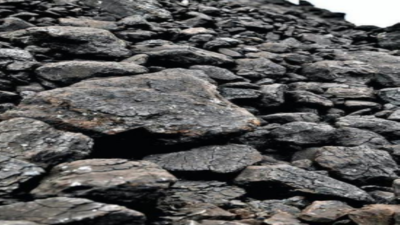- News
- City News
- ahmedabad News
- Ahmedabad: Textile units ask GMDC to cut lignite prices
Ahmedabad: Textile units ask GMDC to cut lignite prices

Ahmedabad is one of the country's biggest cotton textile processing hubs with 120 big processing houses having installed daily capacity of more than 2 crore metres.
AHMEDABAD: Textile processing houses in the city are demanding that GMDC lower its lignite prices. They are getting lignite from Barmer that is at least Rs 1,000 a tonne cheaper.
Lignite accounts for about 28% of the total cost of textile processing. GMDC said lignite production in some mines had fallen so there is temporary shortage and the situation will be normal by next month.
A member of the Ahmedabad Textile Processors' Association said, "We use lignite as a fuel for processing and largely source it from GMDC. In the last year, imported coal and lignite prices have increased sharply and the contribution of lignite costs to out total cost has increased to around 28% from 12%. The industry is facing difficulties due to high cotton prices and most units are running at 50% capacity. Currently, we get lignite with 3,100 GCV (gross calorific value) from Barmer for Rs 6,086 per tonne while GMDC's Kutch lignite of the same GCV costs Rs 7,094 a tonne. GMDC Bhavnagar lignite of 2,950 GCV costs Rs 5,872. We want GMDC to decrease the price of lignite to give some relief to the industry."
Ahmedabad is one of the country's biggest cotton textile processing hubs with 120 big processing houses having installed daily capacity of more than 2 crore metres.
GMDC MD Roopwant Singh said, "We are selling lignite 50% cheaper than imported coal based on gross calorific value but currently lignite production at two important mines, Rajpardi and Tadkeshwar, has reduced due to the heavy rain. We are transporting lignite from our Kutch mines so the prices may be higher. However, this is temporary and supply will be normal soon."
He added that GMDC has 2.36 lakh tonnes of orders for the current fortnight from its five lignite mines and allocation is in the range of 17% to 30% of registered capacity.
Lignite accounts for about 28% of the total cost of textile processing. GMDC said lignite production in some mines had fallen so there is temporary shortage and the situation will be normal by next month.
A member of the Ahmedabad Textile Processors' Association said, "We use lignite as a fuel for processing and largely source it from GMDC. In the last year, imported coal and lignite prices have increased sharply and the contribution of lignite costs to out total cost has increased to around 28% from 12%. The industry is facing difficulties due to high cotton prices and most units are running at 50% capacity. Currently, we get lignite with 3,100 GCV (gross calorific value) from Barmer for Rs 6,086 per tonne while GMDC's Kutch lignite of the same GCV costs Rs 7,094 a tonne. GMDC Bhavnagar lignite of 2,950 GCV costs Rs 5,872. We want GMDC to decrease the price of lignite to give some relief to the industry."
Ahmedabad is one of the country's biggest cotton textile processing hubs with 120 big processing houses having installed daily capacity of more than 2 crore metres.
GMDC MD Roopwant Singh said, "We are selling lignite 50% cheaper than imported coal based on gross calorific value but currently lignite production at two important mines, Rajpardi and Tadkeshwar, has reduced due to the heavy rain. We are transporting lignite from our Kutch mines so the prices may be higher. However, this is temporary and supply will be normal soon."
He added that GMDC has 2.36 lakh tonnes of orders for the current fortnight from its five lignite mines and allocation is in the range of 17% to 30% of registered capacity.
FOLLOW US ON SOCIAL MEDIA
FacebookTwitterInstagramKOO APPYOUTUBE
Start a Conversation
end of article









